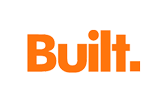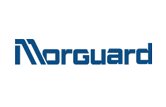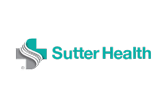COVID-19 & Construction: You've Got to Take Care of Your Employees
My Fieldwire colleagues and I have been speaking with construction professionals about the ongoing COVID-19 pandemic and its impact on the industry. This is my conversation with Tom Strong, President and CEO of CanBIM, Principal at wired.construction, and the former CTO of EllisDon. I was joined by Ray Mina, Head of Marketing at Fieldwire.
[Yves Frinault] Hey everyone. I'm Yves. I'm the CEO of Fieldwire and I am here today with Tom Strong.
Tom, we've known you for many years while you were the CTO of EllisDon, one of Canada's largest general contractors. Now you’re the President and CEO of CanBIM, a non-profit focused on construction technology in Canada, probably the largest organization like that in Canada. And a founder of wired.construction https://www.wired.construction/, which you describe as being a CTO for hire. Can you tell us a bit more actually about wired.construction.
[Tom Strong] Like you mentioned, I spent a lot of time working in a big organization focused on technology innovation. I just see an opportunity to really help out smaller companies thinking about their — not only their technology stack and the decisions they make about technology but how that works with their business processes and their people. So the intent isn’t to sort of attack the world and service a thousand clients. I want to have meaningful engagements with a handful of companies at a time and flush out a team and really help construction companies navigate the complexity around all of the technology that is now available to help them create efficiencies for their work.
[Yves Frinault] Yep. Changing organization takes time, and I think the change management part often is equally as hard as picking the right technology, so—
[Tom Strong] Culture is the hardest part. You know, you got to win over their hearts and minds. There's a lot of people in the workforce that like what they do. Construction doesn't allow for— Just the way the industry works, there's not a lot of money around to invest in R&D and retooling and rethinking the way you work. You're moving from project to project and I think the relationships are now changing. The companies are getting larger, the projects are getting larger and more complex so you need a certain level of sophistication just to operate in the industry. Companies need to keep cash on hand to have bonding capacity and they don't have the money to invest into R&D so they haven't had the opportunity to re-tool and add technology to enhance what they're doing. I have had the luxury of working in a really large, sophisticated general contractor and helping to make decisions around those strategies and that's something that I'm excited about being able to bring to the rest of the market.
[Yves Frinault] That's really interesting. So when you talked about culture, what is usually the biggest argument around investing in technology and helping people move forward in that direction?
[Tom Strong] I think it's not even getting in an argument, it's great. If you can get in an argument, then at least people are listening and there's debate. The best decisions are going to come out of arguments. It's when people won't even come to the table to have a discussion about change because they've got their heads down and they're extremely busy. What they do is profitable or whatever the case is, they're not thinking over the horizon at all. That's the challenge, just getting people out of their comfort zone with their existing sort of mindsets and having them come to the table. I think once you can have these discussions with companies and once you can kind of identify the kind of sticks in the mud, you can kind of work with them and once they're exposed to what is possible, the light bulbs go on.
With a product like Fieldwire, if you have a superintendent that is used to having a roll of drawings under their arm and rolling around the jobsites with information that's maybe two months out of date. And all of a sudden you give them the opportunity to have access to current information in real-time, the lights go on. They get it. They want it, and now they become the champion within their organization or the board. I have enjoyed that part of it, bringing innovation to people and having them engage with it and start to drive it on their own. Seeing that curve, that's a lot of fun.
[Yves Frinault] Arguably, that's one of the silver linings of the current situation, where COVID-19 can be used as a reason for companies to adapt to developments on the technologies side. We will get back to that in a second.
One of the interesting things is you are based in Toronto. We haven't talked too much about the construction situation in Canada right now, so what are you seeing? What is the situation up there?
[Tom Strong] Toronto is... I am pretty sure it's the busiest construction market in North America, right now. I have heard there's this stat, and I am probably going to like get it totally wrong, I don't know if you have a fact-checker on board there with your podcasts but I think there's more cranes up in Toronto than New York, Miami, and Chicago combined. Toronto is extremely busy.
There's a shortage of office space, there's a shortage of housing, there's a lot of infrastructure underway there. It's an extremely busy market. There's demand for housing to be built, there's demands for transportation systems to be built. So this kind of disruption, obviously it's not welcomed for productivity, it's going to slow things down, certainly. But the jobsites are still open.
Just recently the government has been slowly reducing what they're describing as 'essential workplaces,’ right? Just recently they've put a lot more restrictions on construction and what we're seeing now is that if you're working on a healthcare project, obviously, if you're working on any kind of healthcare-related project where you're manufacturing, say, pharmaceuticals or medical equipment, obviously those projects are going to continue to move forward. Then anything that is essential infrastructure as it relates to transportation, anything related to industrial, related to petrochemical that would keep society operating. Those things are deemed essential. Residential projects: if you have an existing permit then you're allowed to continue working on that project, but they're not going to be issuing any new permits for any kind of residential projects.
It's interesting. There's been a lot of public debate about this. Obviously safety is the number-one priority for all builders. This creates a new level of complexity to consider on a jobsite. Construction is a hazardous activity on the best days and there are all sorts of things in place to try to reduce workplace injuries, etcetera. Now you have this extra factor of infectious disease control, and it really creates a huge challenge. If you're thinking about sequencing you have to think about your workers as your teams, groups that you want to keep separated in time and space so you can control infections. There's also a requirement— I was reading up on the requirements in Ontario and there's actually a requirement for builders to track where their workers are and where they have been so that in the event that someone gets infected, they can actually go backwards in time and understand where they were.
I am kind of curious to see what kind of technology products emerge. For example, Fieldwire could potentially have some of that data already, but it's not being used. So there are definitely some opportunities to think about the use of technology as it relates to tracking workers and understanding if there's any kind of transmittal opportunities for these hazardous diseases.
Overall, I think it's certainly not business as usual. There's going to be the other shoe to drop, that’s going to be the supply chain. The borders are a lot more restricted. If you have a long lead item, like an air handle unit that is maybe getting manufactured down in the US somewhere, getting that equipment across the borders can be challenging if not impossible. That is obviously going to have an effect on your critical path of your project. There's definitely going to be some other issues.
You go to Home Depot now and they're letting you in the store but you had to wait in a long line and they only let fifty people in at once. Now they won't even let you in. They block you at the door and you have to wait outside and a runner basically runs and gets you what you need. These types of things are going to slow the industry right down. It will be interesting. What I am curious to see what happens is how it affects existing contracts. If you have a major disruption like this, a lot of these major infrastructure projects are already behind schedule so maybe this is going to give the contractors a bit of ammunition to argue for some extra time. But it's certainly going to slow the industry down.
[Yves Frinault] That's actually a good transition. I do wonder whether policy is going to allow contractors to renegotiate contracts. We're seeing that happen in very strange fields. For example, right now rental contracts for office space in San Francisco. Potentially, they're going to allow you to break long-term lease agreements, because you've not been able to use the spaces. That would be the craziest thing, you could get out of a ten-year lease, if you wanted, that you have already signed. It's very early, we're tracking it, but there's potentially some movement there.
You were saying that the volume of activity is going down which is expected. What are you seeing companies do with that extra capacity that they have? Are you seeing them adapt on the technologies side? Are you seeing them take specific steps towards the technology front to adapt to the situation?
[Tom Strong] Yes. It's going to be a mix. Depending on the size of the organization and how much cash they have on hand and what their burn rate is, that's the thing. Definitely the bigger companies, they compete so hard to get the best people. I don't expect that they're going to lay people off even if they're slowing down just because it's so hard to get those good people in the first place.
Technology is definitely supporting people working from home and our industry and, really, it always has. You can really have all of your site workers working remotely except for the people that actually need to physically be on site. The bigger companies are going to transition to a more virtual workplace. We are going to be using technology like this where we're having meetings and what-not.
Smaller companies that have to shut down their sites entirely — there's going to be impact. People are going to be laid off, unfortunately. I do think the economy is going to come roaring back, which is good. That will be good when it happens. It also creates a bit of a premium for it at that point because now you're working overtime and what-not. The whole thing is obviously not good for anybody but the bigger companies are going to be relying on technology a lot more. The downtime is going to allow them to re-tool and rethink their strategy as it relates to technology.
Maybe this is an opportunity to move things forward and think about innovation. The market has been so busy that— When you're busy, you're kind of busy doing busy-work and not thinking strategically, necessarily. Thinking about how to improve. This is an opportunity where things are obviously going to get a little bit more lean. There's going to be a little bit more competition, there's going to be more emphasis on efficiency. Companies are going to be thinking about their technology stack and potentially the absence of any kind of technology on a lot of these companies. A lot of companies are still working off Excel and what-not. There's definitely an opportunity with some extra time to re-think about how you're operating and explore new tools and processes. You want to make use of that time while you're stuck at home.
[Ray Mina] Tom, we were talking earlier, you mentioned Excel, and we were talking earlier about how even this call, we're using video-sharing tools and it's kind of second nature to us. For some people in construction who are now huddling in a virtual meeting as opposed to on the jobsite, it's a change. What are some of the simple things that you would recommend from a technological standpoint that people in construction could literally start doing this week to help with the productivity side?
[Tom Strong] You've obviously pointed out the number one thing a general contractor does is communicate. That's their job, right? Their job is to take information from one entity, pass it off to another entity, make sure they understand it. Manage the flow of communication between all the stakeholders over the course of the projects. As a contractor, you have got to be excellent at communication.
I can remember when I was a coordinator in the field in the early 2000s [laughs]. It doesn't seem like that long ago but we were using GoToMeeting and crushing fifty meetings per day having five-minute meetings. I was dealing with an architect down in California at the time, and we didn't book meetings. We just had back to back meetings online as necessary. This virtual technology is not new.
As a coordinator, this is your number-one tool to be able to share a screen with someone and quickly resolve an issue and then follow up with an email that is a record of that solution. I think virtual meetings are a huge thing. I think any kind of common data environment platform that would allow you to share information across your project teams is essential. You're going to have— If you have people still active on construction sites then you need to have current information. They need to be able to communicate fluidly with the office and all the other stakeholders that are potentially working from home.
A robust system that can host your documents and manage your document control in the cloud like Fieldwire is essential. That is also not a new concept but it's really best practices now.
If contractors don't have a strategy in place to manage their digital information centrally in the cloud, that's an area you have certainly got to focus on. Then there are a whole bunch of other peripheral systems that work on the same concept. Sophisticated project management tools to manage workflow, communication, etcetera. That is very important.
The other trends, like a better connection between the three-dimensional geometry of the building and layout of the field, these things aren't going away and this is an area that needs to be— If you're in charge of installing a complex system in the field, your business should be focused on working proactively to fully coordinate the geometry of what you're going to install on the jobsite in advance of arriving on the jobsite. Then you need the same level of sophistication on the site to lay out these systems to match what you have pre-engineered. These are important strategies. They're not new things, but they're things that companies are at different levels of maturity with.
The other big trend that I am seeing is overall productization of the industry. We're seeing a trend away from providing a service, like an architect provides a service to do design, or a general contractor provides a service to manage construction. We're seeing things become more productized as the industry gets more integrated so that designers and contractors work as one entity and they create and retain and refine intellectual property. Then they are going to clients with a brochure saying we have this product to offer, right? We're not providing a service, we're providing a product. That's an overall trend that's happening across the industry right now. That's an area that is a change to business and it requires a different way of thinking, a different way of collaborating, a different legal structure. There's a whole bunch of technology and other things that need to be investigated in order to jump start that sort of initiative.
Off-site construction and mod, these are areas that contractors in the drive to proceed to initiate, but they don't necessarily have the experience to be able to manage it in the manufacturing environment. These are interesting things. There's a tremendous amount of information in the industry, there are all sorts of associations focused on these different subjects. If you're stuck at home and thinking about what you can do to mature your business, there's quite a bit of information available to you through the internet.
[Yves Frinault] That really resonates with me right now. I see with the company right now that we're catching up on a lot of things that we never have the time to do when we're working at 100%. Right now there are parts of the orgs that have a bit more time as the volume is a bit more reduced. They're able to catch up and finally do the things that we have wanted to do for like two years but we never got to.
[Tom Strong] Yeah, like your inbox, right?
[Yves Frinault] Exactly. It had better be perfect in a week, right?
There is a way to look at the situation right now as an extra hardship on the industry that actually will further separate the companies that have been preparing hard over the last few years. Other companies have just had issues evolving their processes. We talk a lot about strategy versus execution. As you said, a lot of the things you're talking about are not new, some have been around for five, ten, twenty years now for some of them. The only thing is they've never been implemented necessarily efficiently by some of those companies. Do you agree with that strategy versus execution bias? Or in our case, execution bias?
[Tom Strong] Strategy always needs to be a living thing. You don't create a strategy and it sits on the shelf. You have to constantly be measuring. You can't manage what you can't measure. You have to measure how you're executing and that's going to inform your strategy. The two things are separate things, but they are closely— They should be married.
These days an area that we're seeing companies really invest in and really think about is overall data strategy. It's not a new concept. It's business analytics. If you don't know where your project is in real-time then you can't go in and prevent a bad thing from happening. You don't know your numbers, you don't know where your project is, you don't know if the project manager is spinning the results in the field. Connecting all these digital platforms on a jobsite that measure transaction information, that you can measure progress, like Fieldwire as an example. Obviously you're tracking all sorts of issues. You're tracking activities, you're tracking how quickly things get closed out. That's valuable data that can be pulled into an overall data strategy so you can measure your businesses. Your strategy needs to be a living document that kind of works in concert with how you're measuring performance on a jobsite so you can constantly be adjusting your direction and steering.
[Yves Frinault] Any closing thoughts for a mid-size general contractor or maybe even a big general contractor right now that's dealing with the situation? What are two or three things I really need to focus on right now to get through this as well as possible?
[Tom Strong] The number-one thing is to take care of your people. You have got to really pay attention to your labor, your temporary workforce but your permanent workforce as well. This is where the rubber meets the road, and where it really comes down to it. You have got to take care of your employees and make sure that they're safe, first of all. In the event that you're in a crunch and you're in a slow-down, you have really got to think through the value of the people. If you have got the capacity to weather the storm, keep your people. Put them to work. Have them focus on innovation. Have them retool the business. Have them do something productive that's going to improve the business and prepare for when the economy turns around, which it will in short order. When things do turn around, they're going to move very quickly. Number one, definitely take care of your people.
Number two, buy Fieldwire. It's a great product.
I don't know whether that helps or not. I think if you're slowing down, now is an opportunity to think about your business and think about your technology stack as it relates to your business processes and people because those three things are joined at the hip.
Now is an opportunity to kind of look around. It's rare that you have a pause. In a busy business where you're profitable and making a lot of money and you're constantly dealing with the avalanche of opportunities, this is an opportunity to look around, do some R&D, access the information that is at your fingertips. There's a lot of information out there that is available to help.
Think about your business and think about opportunities to improve efficiency. There's going to be a trend, too, towards your rethinking of safety on projects. We can't just think about what's happening with workers and how they're performing their work physically. We also have to think about infectious disease control more broadly. If we can really develop a good strategy around keeping people safe, keeping them productive, then that will allow the workforce to get back to work sooner. I think technology has a really big role to play in that. You look at South Korea and you study what really allowed them to flatten their curve, it was a data strategy. It was data scientists that were tracking the movements of the whole population, then basically back-citing exposure and prioritizing testing. The root of all that is data strategy.
As a society we have to be a little bit more open to having our locations tracked and monitored as it relates to controlling infectious diseases. As an industry we're going to have to be open to that as well. We need to understand where people are, how they're being exposed to each other. We have to create gateways on every workplace to ensure that people are coming on to the jobsite are healthy and don't have fevers and other things that we can to to potentially— Hopefully we can get to a point where testing, you can do it on your iPhone and you can do it in thirty seconds.
In the meantime, we have to figure out strategies on how to get back to work sooner. It's extremely important for our workers who want to get paid for what they do and put food on their table. It's important for the economy. What we do in this industry, we build civilization. We build shelter. It's a primary thing that everyone needs and we need to continue doing it.
Thinking about how we can get back to work sooner and how we're going to deal with that avalanche of work that's going to be dropped on the industry, that's the other thing you have got to think about.
[Yves Frinault] Yes, you look at countries like Taiwan, very early they got hit super hard when SARS hit them. They started doing thermal imaging all the time. They started producing masks at the very beginning of the epidemic. They are already in a state that is way safer than most of the other countries. Taking it super-seriously right now is probably the fastest way to get the industry back.
[Tom Strong] It's really an analogy for the construction industry as well. Jobs and projects go the same way. The first job you do, it goes lousy. The next job you think, "Oh I think we should use BIM on this project." Or, "I think we should use some technology to help us deal with these projects so we do better next time." I think North America is going through the first pandemic and I think the next one is going to go a lot smoother. We're going to learn a lot here. Challenging times.
[Yves Frinault] Well, on that bombshell, we're going to cut it there. Once again, that was Tom who is the founder of wired.construction and the CEO of CanBIM.

 Yves Frinault •
Yves Frinault • 














